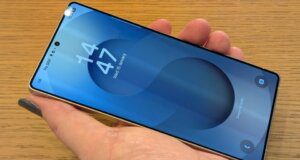After years of stagnation, Samsung’s Galaxy S series is finally poised to embrace faster wireless charging. The upcoming S26 lineup, slated for a January 2026 unveiling, is rumored to ditch the outdated 15W standard for something far more competitive, giving users a much needed speed boost. This shift is a long time coming considering competitors have been pushing the boundaries of wireless power for years.
For Samsung loyalists, this news offers a glimmer of hope that the tech giant is finally listening to consumer demands. Wireless charging, while convenient, has been plagued by slow speeds, often making it a less appealing option compared to wired alternatives. Can Samsung truly catch up, or will it remain a step behind the curve?
Samsung S26 Series Reportedly Boosts Wireless Charging
According to a report from South Korea , the Galaxy S26 and S26+ are expected to feature 20W wireless charging. While a decent improvement, the real excitement surrounds the Galaxy S26 Ultra. The Ultra variant is tipped to support the current Qi2 maximum of 25W, which could reduce charging times by as much as 40%.
That 40% reduction is significant. Imagine slashing the charging time from 100 minutes to just 60. Suddenly, wireless charging becomes a viable option for those on the go, a true alternative to being tethered to a wall.
The charging upgrade isn’t the only exciting development for the S26 series. Leaks suggest a strategic chip distribution. I also reported, recently a new information regarding Exynos 2600 vs. Snapdragon 8 Elite Gen 5.
2 new processors
The Galaxy S26 Ultra is rumored to be powered by the Qualcomm Snapdragon 8 Elite Gen 5 chip. Meanwhile, some regions may see the Galaxy S26 and S26+ equipped with Samsung’s own Exynos 2600, their first 2nm chipset. This new chip promises not only increased efficiency and cooler operation, but also improved camera capabilities. Samsung has previously confirmed that the Exynos 2600 runs significantly cooler than its predecessor, and is also expected to offer exciting camera features.
While these upgrades are welcome, they also raise questions about Samsung’s overall strategy. Why has it taken so long to adopt faster wireless charging? Is this a genuine commitment to innovation, or simply a reaction to competitive pressure? Only time will tell.
The Galaxy S26 series represents a critical juncture for Samsung. With faster charging, a new chip architecture, and a focus on efficiency, the company has the opportunity to regain its footing in a rapidly evolving market. If Samsung can deliver on these promises, the S26 could be a game-changer. If not, it risks falling further behind the competition.
Follow us on Bluesky , LinkedIn , and X to Get Instant Updates





